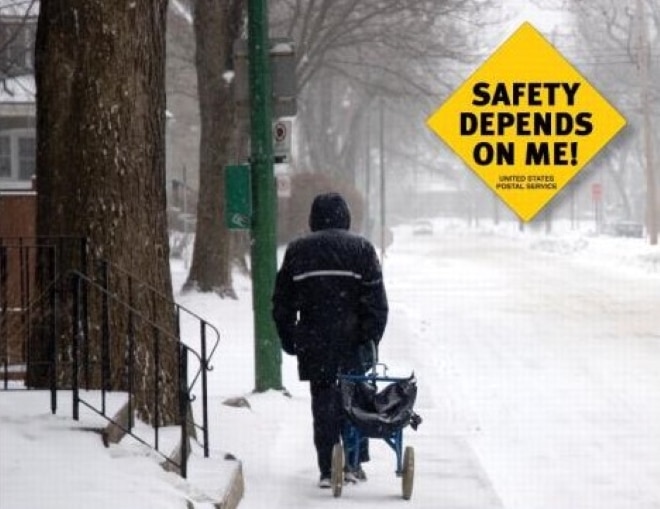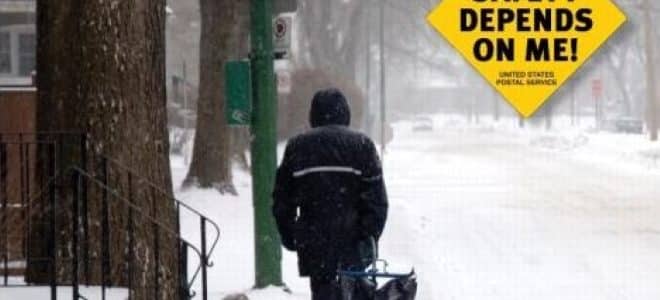
During winter, the secret to preventing injuries and staying safe is preparedness and awareness of potential dangers.
Winter storms can bring snow, sleet, and freezing rain across the entire United States and its territories. Even Hawaii gets snow in the Big Island, and major cities as far south as Atlanta and Dallas have been paralyzed by snow and ice. Thousands of people are injured or killed every year in traffic accidents related to slippery roads from winter storms. Also, injuries from winter weather conditions include slip-and-fall accidents and stress from exposure to cold temperatures and difficult weather conditions. During winter, the secret to preventing injuries and staying safe is preparedness and awareness of potential dangers.
Dress appropriately by wearing three light layers:
- An inner layer for wicking moisture away from your body.
- A middle layer to insulate you from the cold.
- An outer layer that repels wind, snow, and rain that you can remove, as needed.
Protect your hands, neck, and face with appropriate clothing, and wear warm, waterproof shoes or boots. Prolonged exposure to cold temperatures can cause your body to lose heat, which puts you at risk for hypothermia or frostbite. Frostbite occurs when skin is exposed to extreme cold for long periods, and the skin and underlying tissue freeze. The fingers, toes, and feet are most affected, but other extremities such as the nose, ears, and cheeks can also develop frostbite.
At the first sign of frostbite, get out of the cold. Unless necessary, do not walk on frostbitten feet or toes. Do not rub the frostbitten area because it will cause more damage. Warm the affected area using body heat or by immersing it in warm water; avoid using a heating pad, heat lamp, or the heat of a stove, fireplace, or radiator for warming because direct heat can burn damaged tissue. Drink warm beverages to replace lost fluids. In case of severe frostbite, seek medical attention.
Whether you are driving for work or leisure on wet and icy road surfaces, during long periods of darkness, or with poor visibility from snow, rain, and fog, all these conditions create driving hazards during the winter months. Prepare for driving in bad weather using the following tips:
- Maintain your vehicle and tune up the engine for winter.
- Keep good treads on your tires.
- Make sure your lights function properly.
- Add anti-freeze and windshield wiper fluid, when necessary.
- Replace worn wipers.
- Clear ice and snow from windows, headlights, and the hood and roof of your car before driving and repeat as needed.
Keep an emergency kit in your car with the following supplies:
- Cat litter or sand.
- An ice scraper or snow brush.
- A small shovel.
- Extra clothes and blankets.
- Non-perishable food.
If you plan to travel in bad weather, monitor road and weather conditions by checking local news, traffic reports, and weather stations or websites. Winter driving can be challenging — practice safe driving techniques with these tips:
- Leave a few minutes early so you have plenty of time to reach your destination.
- Wear your seat belt.
- Avoid distractions while driving.
- Stay alert and calm. Keep an eye on traffic farther ahead so you have extra time to react to sudden changes in traffic flow.
- Maintain a safe speed for road conditions. Keep a safe distance between you and other vehicles.
- Do not use cruise control. Touching your brakes to deactivate it can cause you to skid.
- Avoid making abrupt lane changes. Use turn signals well before you turn.
- Make room for maintenance vehicles and snowplows.
- Watch for black ice on slippery overpasses and bridges.
- Do not use alcohol or drugs while driving.
Winter safety throughout the season also includes the following tasks:
- Winterize your home by replacing the weather-stripping on windows and doors, and clean leaves out of the gutters.
- Service your home’s heating system.
- Install carbon monoxide detectors to pick up on any CO that makes its way into your home through your garage or your heating system.
- Get chimneys inspected.
- Stock up on food, water, batteries, and other supplies in case you lose power during a bad storm and can’t get out.
Before a storm strikes, ensuring our Postal Service™ facilities are safe for our employees and customers is vitally important in Delivering for America.
- Certifying supplies such as ice melt, sand, and shovels are necessary to ensure safe walking surfaces.
- Contracts may need to be updated for snow removal or grounds maintenance when necessary.
- A rotation schedule for floor mats may need to be increased due to winter weather conditions.
During the month of December, all employees will receive a postcard mailer that serves as a reminder on how to protect and prepare for cold weather.
For additional winter safety tips, see the following resources:
Safety Depends on Me videos at blue.usps.gov/corpcomm/uspstv/safety-and-health.
HERO Safety Talks.
Center for Disease Control and Prevention (CDC) at cdc.gov/disasters/winter/index.html.
Occupational Safety and Health Administration (OSHA) at osha.gov/winter-weather.
National Safety Council at nsc.org/community-safety/safety-topics/seasonal-safety/winter-safety/winter.
National Weather Service at weather.gov/safety/winter.
Postal Bulletin – December 14, 2023
Source: USPS

